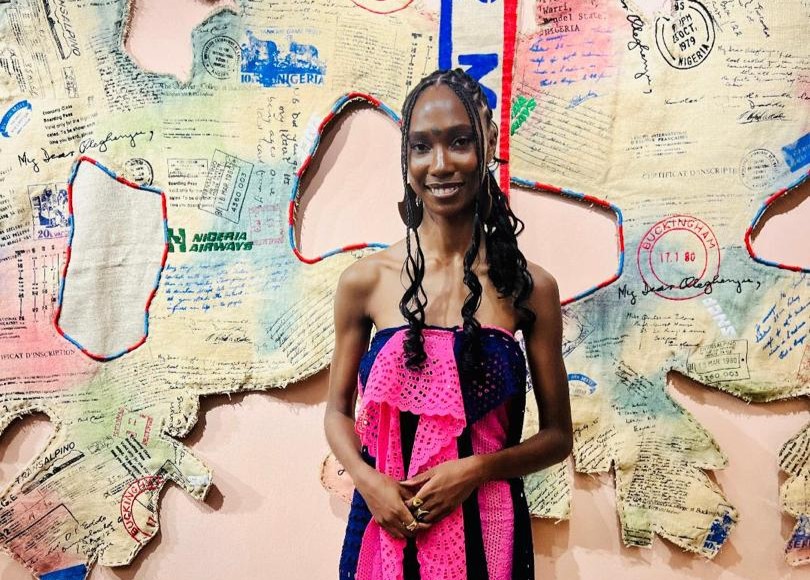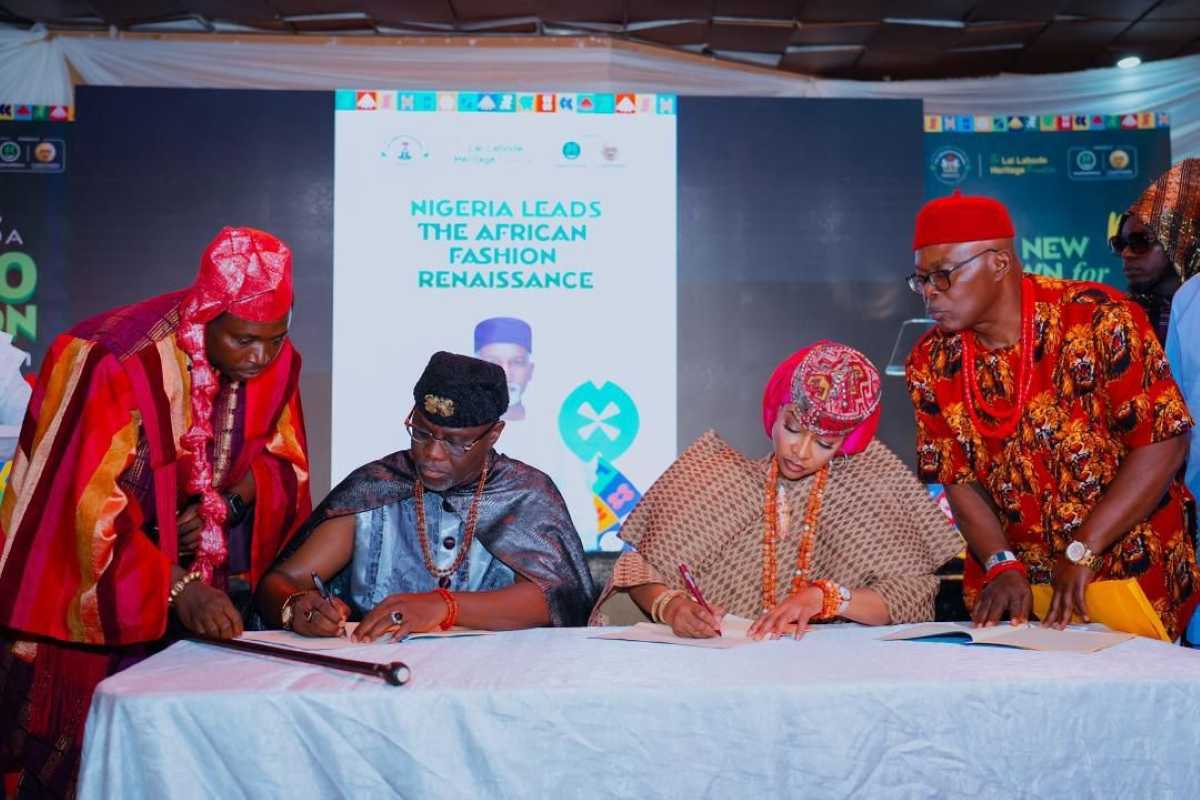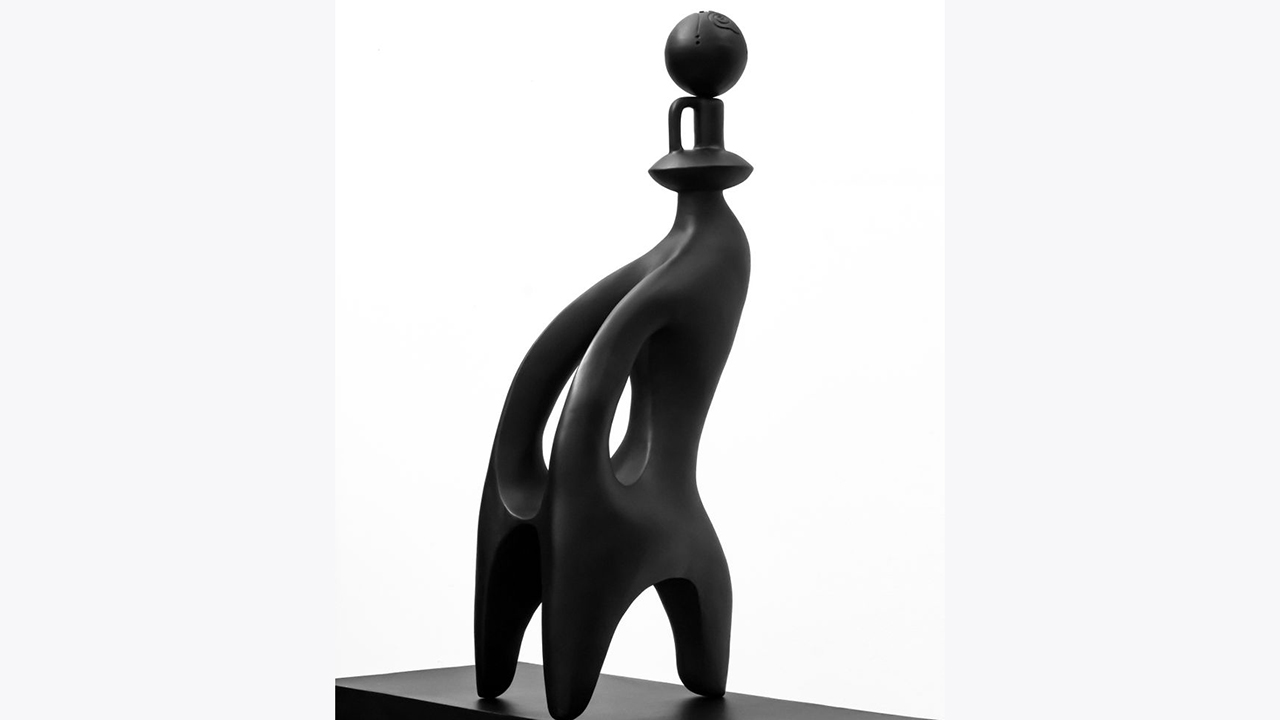There Was Once a Traveler by multidisciplinary artist, Yoma Emore, is a poetic exploration of memory, migration and correspondence, where textiles become vessels of lived experience and historical residue.
Inspired by letters exchanged between her mother and international pen pals during the 70s and 80s, Emore transforms epistolary communication into tactile landscapes-maps of intimacy, longing and the enduring traces we leave behind. Describing it as an investigation into the art of remembering, she said it feels like embarking on a never-ending journey. “It is also an investigation into the traces we leave behind as we journey through life and being intentional as to how we are remembered.”
At her debut solo exhibition held at Rele Gallery in Lagos, she said the works act as a secondary archive of original objects and serve to get people to change the perceptions of how they see everyday objects. “People are surprised my mom kept these letters. I don’t know why she did but I think in a way, she always subconsciously wanted someone to tell her story.”
Noting that the smaller pieces are a celebration of the envelopes and also, the art of archiving, “The dates on the envelopes created a sort of time capsule and the suitcase you see is where the letters were kept. Asides being a celebration of her story, it is also a celebration of the objects themselves,” she said.
Through hand-stitched embroidery, jute, screen-printing and layered textile compositions, this series enacts a speculative archaeology of connection-inscribing the emotional and bureaucratic traces of diasporic movement, nostalgia, and deferred encounters. “The keyword here is connection and when I thought of how to translate that into something visual, I thought of weaving and the jute material came to mind. Everything you see here is hand-embroidered and all the texts on the art pieces are taken from the actual letters.”
At its heart is a remarkable story of fate: a letter sent by a German pen pal, Josef, took two years to reach Emore’s mother in Nigeria. In a surreal twist, she would later recognise Josef in her language class in France, their written correspondence manifesting into an unexpected real-life encounter. It is precisely these moments, where time folds, letters collapse distance and absence transforms into presence, that Emore captures with deftness and emotion.
Describing her art as the ‘fabrics of time’, she said they act as secondary archives and through them, the viewer is transported back in time. “They’re time capsules, maps if you will, serving as a guide back to the past, people and places of a particular time; helping viewers encounter those people over and over again without losing sight of them.”
Structured as an unfolding journey, There Was Once a Traveler is composed of interwoven chapters, The Traveler’s Map, My Dear Oleghenju, Josef’s Dreams, Tsemogha’s Tales, The Adventures of Liz Chowdhury, 8130 Rothenfeld and The Post Box Chronicles. Each work functions as a topography of memory, where letters, stamps, travel documents and postal markings are stitched into delicate networks of movement and entanglement. Maps emerge as central motifs, both literal and conceptual, rendering the personal as a psychogeographic terrain, an interior atlas of imagined and real landscapes.
There Was Once a Traveler proposes an alternative temporality, one in which the past is neither static nor inert, but in constant dialogue with the present, reanimated through the material practices of memory-making. She doesn’t intend this being the end though, saying, “When I find my next story, I will definitely share it to the world”.
Gallery patron, Weyinmi Otunor, said the works speak to the art of memory and remembrance. “She might be a new artist but her future is bright. Her works are unique and the world needs to see more of her art. This collection brings power and light to people and the colours, embroidery, detailing and intentionality is second to none,” she said.






